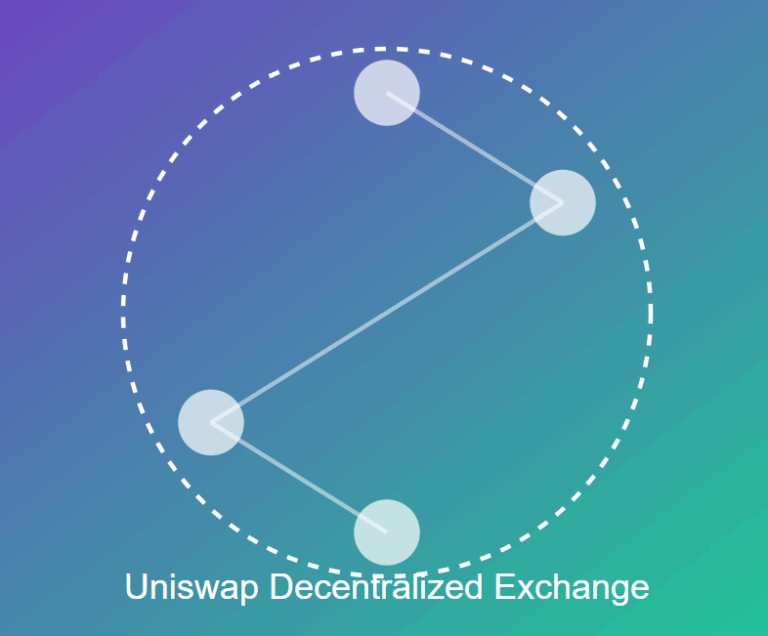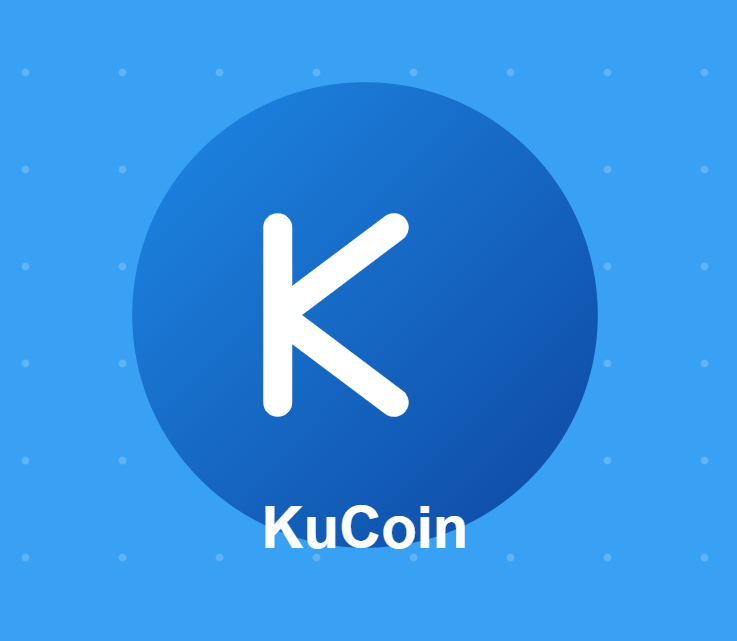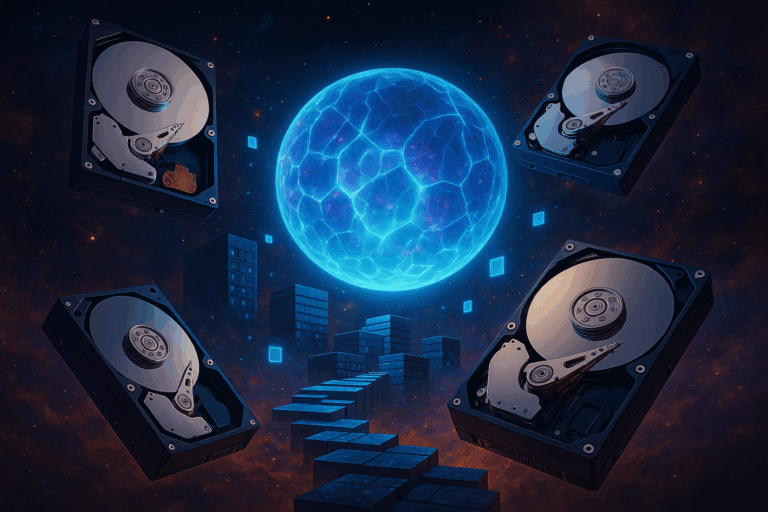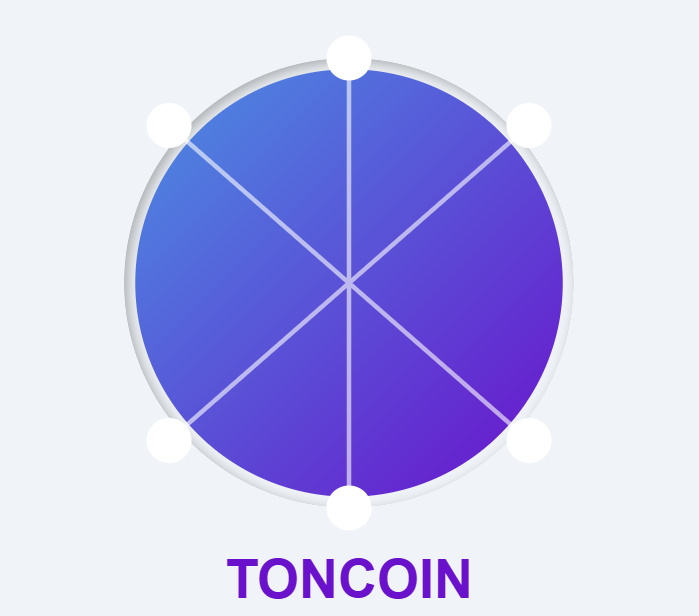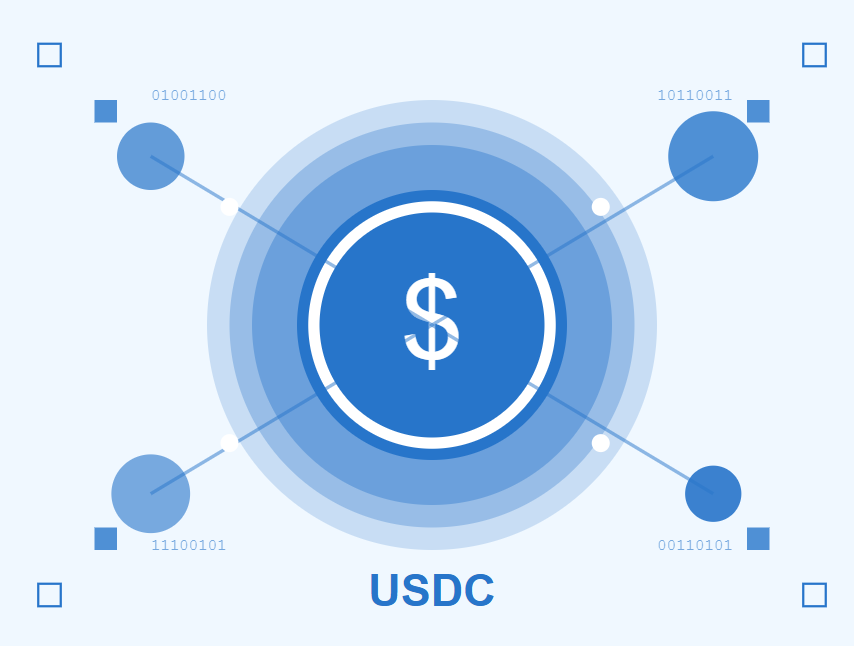
The Future of USDC
Introduction
In the ever-evolving landscape of digital currencies, USD Coin (USDC) has emerged as one of the most significant stablecoins in the cryptocurrency market. Launched in September 2018 by the CENTRE consortium, a collaboration between Circle Internet Financial and Coinbase, USDC was designed to bridge the gap between traditional financial systems and the burgeoning world of blockchain technology. Unlike volatile cryptocurrencies such as Bitcoin or Ethereum, USDC is a type of stablecoin pegged to the US dollar at a 1:1 ratio, offering the benefits of cryptocurrency technology while maintaining price stability. This comprehensive analysis explores the multifaceted aspects of USDC, examining its technological foundation, regulatory framework, market position, and future prospects in the global financial ecosystem.
The Technical Foundation of USDC
Blockchain Architecture
At its core, USDC operates on multiple blockchain networks, with Ethereum being the primary one. Initially launched as an ERC-20 token on the Ethereum blockchain, USDC has since expanded to other networks to address scalability issues and provide users with more options. These networks include Solana, Algorand, Stellar, Tron, Hedera, Avalanche, and Flow, allowing for greater flexibility and reduced transaction costs depending on the specific blockchain.
The multi-chain approach adopted by USDC represents a strategic move to overcome the limitations of a single blockchain. Ethereum, despite being the most developed smart contract platform, has faced challenges with high gas fees and network congestion during periods of high demand. By expanding to other blockchains, USDC can offer faster transaction speeds and lower fees, enhancing its utility for various use cases, from remittances to decentralized finance (DeFi) applications.
Smart Contract Implementation
The smart contracts that power USDC incorporate several key features that ensure its security and functionality. These include:
- Minting and Burning Mechanisms: When users deposit US dollars with Circle, the company mints an equivalent amount of USDC tokens. Conversely, when users redeem USDC for US dollars, the tokens are burned (removed from circulation). This process maintains the 1:1 peg to the US dollar.
- Blacklisting Capabilities: The smart contracts include functions that allow the issuer to blacklist addresses associated with illegal activities, complying with anti-money laundering (AML) regulations.
- Upgradeability: The smart contracts can be upgraded to implement new features or fix security vulnerabilities, enhancing the long-term viability of the stablecoin.
- Transparency Tools: USDC’s smart contracts include functions that facilitate regular attestations and audits of the reserve assets backing the stablecoin.
Reserve Management System
The value of USDC is maintained through a robust reserve management system. For each USDC token in circulation, Circle holds an equivalent amount of US dollars or short-term US government treasuries in reserve. These reserves are held in segregated accounts with US-regulated financial institutions, providing a layer of protection for USDC holders.
The reserve management system is subject to monthly attestations by Grant Thornton LLP, a leading accounting firm. These attestations verify that the USDC tokens in circulation are fully backed by an equivalent amount of US dollars or US treasuries. The results of these attestations are publicly available, promoting transparency and trust in the stablecoin.
Regulatory Compliance and Governance
Regulatory Framework
USDC operates within a complex regulatory framework that varies across jurisdictions. In the United States, stablecoins like USDC fall under the oversight of multiple regulatory bodies, including the Financial Crimes Enforcement Network (FinCEN), the Securities and Exchange Commission (SEC), and state-level financial regulators.
Circle, as the issuer of USDC, holds money transmitter licenses in numerous US states and has obtained several key regulatory approvals, including:
- BitLicense: Issued by the New York State Department of Financial Services, the BitLicense allows Circle to conduct virtual currency business activities in New York, one of the most stringently regulated jurisdictions for cryptocurrency.
- Electronic Money Institution License: Circle has obtained this license in the UK and EU, allowing it to issue electronic money and provide payment services.
- Principal Member of Visa: Circle’s status as a principal member of Visa enables it to issue USDC-based payment cards, further integrating the stablecoin into the traditional financial system.
The regulatory landscape for stablecoins is continually evolving, with new legislation and guidelines being proposed in various jurisdictions. For example, the US President’s Working Group on Financial Markets has called for stablecoin issuers to be regulated as banks, which could significantly impact USDC’s operational framework in the future.
Governance Structure
The governance of USDC is managed by the CENTRE consortium, which sets the technical, operational, and legal standards for the stablecoin. The consortium’s approach to governance aims to balance decentralization with regulatory compliance, a delicate balance in the cryptocurrency space.
Key governance mechanisms include:
- Policy Controls: CENTRE establishes policies for USDC issuers, including requirements for reserve management, AML procedures, and network participation.
- Membership Model: The consortium operates on a membership model, with organizations able to join as issuers or network participants based on compliance with established criteria.
- Technical Governance: Decisions regarding technical upgrades and improvements to the USDC protocol are made through a structured governance process within the consortium.
- Risk Management: The governance structure includes risk management protocols to address issues such as reserve shortfalls, security breaches, or regulatory challenges.
Compliance Measures
USDC’s compliance framework incorporates several measures to ensure adherence to regulatory requirements and industry best practices:
- Know Your Customer (KYC) Procedures: Users must complete KYC verification to redeem USDC for US dollars directly through Circle, although USDC can be traded on exchanges without KYC in some cases.
- Anti-Money Laundering (AML) Controls: Circle implements robust AML controls to prevent the use of USDC for illicit activities.
- Transaction Monitoring: Sophisticated monitoring systems are employed to detect suspicious transactions and report them to relevant authorities.
- Sanctions Compliance: USDC’s blacklisting capabilities enable compliance with international sanctions regimes, preventing transactions with sanctioned entities.
USDC in the Market Ecosystem
Market Position and Growth
Since its launch, USDC has experienced remarkable growth, becoming one of the largest stablecoins by market capitalization. Several factors have contributed to this growth:
- Institutional Adoption: USDC has gained significant traction among institutional investors and trading firms, who use it as a settlement layer for cryptocurrency trades and as a hedge against market volatility.
- DeFi Integration: The stablecoin has become a cornerstone of the DeFi ecosystem, used in lending protocols, decentralized exchanges, and yield farming strategies.
- Cross-Border Payments: USDC’s ability to facilitate fast, low-cost cross-border transfers has made it popular for remittances and international business payments.
- Corporate Treasury Management: Some companies have begun holding USDC as part of their treasury strategies, particularly those operating in the cryptocurrency and blockchain sectors.
The growth of USDC’s market capitalization has not been linear, with periods of rapid expansion followed by consolidation. Major market events, such as the collapse of other stablecoins or changes in regulatory sentiment, have influenced USDC’s adoption rate.
Comparative Analysis with Other Stablecoins
The stablecoin market is highly competitive, with several major players vying for market share. A comparative analysis of USDC with other leading stablecoins reveals several key differences:
- USDC vs. Tether (USDT):
- Tether has a larger market capitalization but has faced more regulatory scrutiny and questions about its reserves.
- USDC is generally perceived as more transparent due to its regular attestations and regulated status.
- Tether has wider exchange support, particularly in Asian markets, while USDC has stronger integration with US financial institutions.
- USDC vs. Binance USD (BUSD):
- BUSD was primarily used within the Binance ecosystem, while USDC has broader adoption across various platforms.
- Both stablecoins operated under regulatory oversight, but BUSD faced regulatory challenges from the SEC and has since been phased out.
- USDC vs. Dai (DAI):
- DAI is a decentralized stablecoin maintained by the Maker protocol, while USDC is centrally issued.
- DAI is overcollateralized with various crypto assets, making it more decentralized but potentially less stable in extreme market conditions.
- USDC benefits from direct backing by US dollars, providing more stability but requiring trust in the central issuer.
- USDC vs. Paxos Dollar (USDP):
- Both stablecoins operate under similar regulatory frameworks.
- USDP has a smaller market capitalization but is notable for its partnership with PayPal for cryptocurrency services.
Integration with Traditional Finance
USDC’s integration with traditional financial systems has been a key factor in its growth and adoption. Several notable developments in this area include:
- Banking Partnerships: Circle has established relationships with regulated financial institutions to hold USDC reserves, including Signature Bank, Silvergate Bank, and BNY Mellon.
- Payment Processing: USDC has been integrated into payment processing platforms, enabling merchants to accept stablecoin payments.
- Corporate Adoption: Companies like Visa have begun experimenting with USDC for settlement purposes, signaling growing acceptance in the corporate world.
- Investment Products: Financial institutions have developed USDC-based investment products, offering interest-bearing accounts and structured products.
The integration of USDC with traditional finance represents a significant step toward the mainstream adoption of digital assets, creating bridges between the conventional financial system and the emerging cryptocurrency ecosystem.
Use Cases and Applications
Decentralized Finance (DeFi)
USDC has become a fundamental building block in the DeFi ecosystem, playing several crucial roles:
- Lending and Borrowing: Platforms like Aave, Compound, and Maker allow users to lend USDC to earn interest or borrow against collateral.
- Liquidity Provision: USDC is commonly used in liquidity pools on decentralized exchanges, enabling traders to swap between various cryptocurrencies.
- Yield Farming: DeFi protocols offer incentives for users to provide USDC liquidity, often in the form of governance tokens or additional yield.
- Risk Management: As a stable asset, USDC serves as a hedge against volatility in DeFi portfolios and as collateral for synthetic assets.
The deep integration of USDC in DeFi has led to significant “total value locked” (TVL) metrics, with billions of dollars worth of USDC circulating within various protocols.
Cross-Border Payments and Remittances
USDC offers several advantages for international money transfers:
- Speed: Transactions can be settled in minutes rather than days, as is often the case with traditional bank transfers.
- Cost Efficiency: The fees associated with USDC transfers are generally lower than those of traditional remittance services, particularly for larger amounts.
- Accessibility: USDC can be sent to anyone with a cryptocurrency wallet, potentially reaching underbanked populations.
- Transparency: The blockchain provides a clear record of transactions, reducing disputes and improving traceability.
Several companies have developed services specifically focused on using USDC for remittances, targeting corridors with high volumes and significant pain points, such as transfers to Latin America and Southeast Asia.
Corporate Treasury Operations
Innovative companies are exploring the use of USDC for treasury operations:
- Digital Cash Management: USDC provides an alternative to traditional bank deposits for holding liquid reserves.
- Yield Generation: Treasury managers can deploy USDC in conservative DeFi strategies to generate yield on otherwise idle cash.
- Operational Efficiency: Smart contracts can automate treasury functions such as payroll, vendor payments, and revenue distribution.
- Global Operations: Companies with international operations can use USDC to manage liquidity across borders without the friction of traditional banking systems.
While the adoption of USDC for treasury operations is still in its early stages, it represents a potentially transformative use case, particularly for companies operating in the digital economy.
Challenges and Risks
Regulatory Uncertainty
The regulatory landscape for stablecoins remains in flux, presenting several challenges for USDC:
- Evolving Frameworks: Regulatory approaches to stablecoins vary widely by jurisdiction and are continually evolving, creating compliance complexity.
- Banking Regulations: Proposals to regulate stablecoin issuers as banks could significantly impact USDC’s operational model and cost structure.
- International Coordination: The lack of coordinated global regulation for stablecoins creates regulatory arbitrage opportunities but also jurisdictional risks.
- Securities Classification: Questions about whether certain stablecoins might be classified as securities could have legal implications for USDC and its issuers.
The regulatory uncertainty surrounding stablecoins represents one of the most significant risks to USDC’s long-term viability, requiring ongoing adaptation and engagement with regulatory authorities.
Technical Vulnerabilities
Like all blockchain-based assets, USDC faces several technical risks:
- Smart Contract Vulnerabilities: Despite audits and security measures, the possibility of undiscovered bugs or exploits in the smart contracts cannot be eliminated.
- Blockchain Vulnerabilities: The security of USDC is partly dependent on the security of the underlying blockchains, which could be compromised through 51% attacks or other vectors.
- Centralization Risks: The centralized nature of USDC’s issuance creates single points of failure that could be exploited.
- Interoperability Challenges: As USDC expands to multiple blockchains, ensuring secure and efficient cross-chain transfers becomes increasingly complex.
Circle and the CENTRE consortium employ various security measures to mitigate these risks, including code audits, bug bounty programs, and gradual implementation of upgrades.
Market and Economic Risks
USDC also faces market-related challenges:
- Counterparty Risk: The value of USDC is dependent on Circle’s solvency and the security of the reserves held by its banking partners.
- Competition: The stablecoin market is becoming increasingly competitive, with new entrants potentially eroding USDC’s market share.
- Bank Run Scenarios: A loss of confidence in USDC could theoretically lead to a “bank run” scenario, where many users attempt to redeem their tokens simultaneously.
- Interest Rate Environment: Changes in interest rates affect the yield generated by USDC reserves, which could impact the economics of maintaining the stablecoin.
These risks are mitigated by Circle’s transparent attestation process, diverse reserve management, and the robust governance of the CENTRE consortium.
The Future of USDC
Technological Evolution
The USDC protocol is likely to evolve in several ways:
- Scalability Improvements: Further integration with layer-2 solutions and high-throughput blockchains to reduce transaction costs and increase speed.
- Programmable Money Features: Enhanced smart contract capabilities to enable more complex financial operations directly with USDC.
- Privacy Enhancements: Implementing privacy features while maintaining compliance with regulatory requirements.
- Cross-Chain Interoperability: Developing more seamless bridges between different blockchain implementations of USDC.
These technological advances will likely expand the utility of USDC and address some of the current limitations of the stablecoin.
Market Expansion
USDC’s market presence is expected to grow in several dimensions:
- Geographic Expansion: Increased adoption in regions with currency instability or limited banking access.
- Sectoral Deepening: Greater integration with specific industries such as gaming, content creation, and international trade.
- Institutional Adoption: More financial institutions incorporating USDC into their operations and service offerings.
- Retail Accessibility: Simplified user experiences and more intuitive interfaces to drive mainstream adoption.
The expansion of USDC’s market reach will likely be influenced by both technological developments and regulatory clarity in different jurisdictions.
Regulatory Integration
The future of USDC will be shaped by its integration with evolving regulatory frameworks:
- Regulatory Technology: Implementation of advanced compliance tools to meet increasingly sophisticated regulatory requirements.
- Central Bank Digital Currencies (CBDCs): Potential coexistence or integration with future US digital dollar initiatives.
- Global Standards: Participation in the development of international standards for stablecoins and digital assets.
- Regulatory Licenses: Acquisition of additional regulatory approvals and licenses to expand operational capabilities.
The ability of USDC to navigate the complex regulatory landscape while maintaining its utility will be crucial for its long-term success.
Conclusion
USD Coin represents a significant innovation in the convergence of traditional finance and blockchain technology. By providing a stable, regulated, and transparent digital representation of the US dollar, USDC has established itself as a foundational element of the emerging digital asset ecosystem. Its growth and adoption across various use cases, from DeFi to cross-border payments, demonstrate the demand for bridging the gap between conventional financial systems and the blockchain world.
However, USDC also faces considerable challenges, including regulatory uncertainty, technical risks, and market competition. The future evolution of USDC will depend on how effectively Circle and the CENTRE consortium navigate these challenges while continuing to enhance the utility and accessibility of the stablecoin.
As the digital asset space matures and institutional involvement deepens, USDC is positioned to play an increasingly important role in shaping the future of money and finance. Whether as a complement to traditional financial infrastructure or as a building block for entirely new financial paradigms, USDC’s impact on the global financial system is likely to grow in the coming years.
For users, developers, and financial institutions, understanding the multifaceted nature of USDC—its technological underpinnings, regulatory context, market dynamics, and future trajectory—is essential for navigating the rapidly evolving landscape of digital currencies and blockchain-based finance. As this space continues to develop, USDC stands as a notable example of how innovation can occur within regulatory boundaries, potentially creating more inclusive, efficient, and interconnected financial systems for the digital age.
